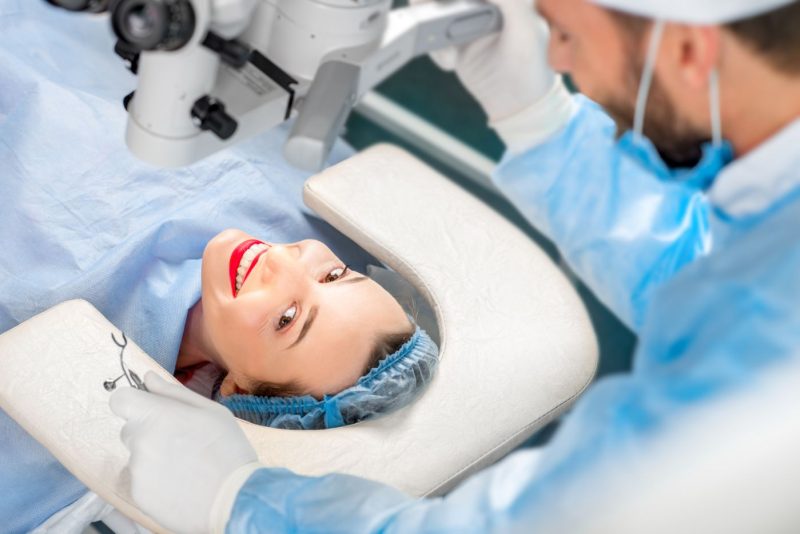Vision is the most important of our five senses. Not only does it help us interpret the world as we see it, but it allows us to provide for ourselves and to keep safe. The expression of our eyes also reflects our emotions, whether pain, sorrow, happiness or love.

The most common eye conditions to affect our vision are:
- Myopia or short-sightedness: objects in the distance cannot be seen clearly
- Hyperopia or long-sightedness: close up vision is predominantly affected, whilst distance vision can be either normal or reduced
- Astigmatism: both near and distance vision are blurred and
- Cataract: a clouding of the natural lens that reduces the clarity of vision for both distance and near
The easiest way to improve your vision for these conditions is with glasses, though for cataract the benefit may be small and temporary. Although glasses can be considered a fashion accessory, most people do not like wearing glasses due to the inconvenience of fogging up, cosmesis and peripheral distortion of vision. They usually turn to contact lenses which overcome these limitations but do carry their own risks.
Laser eye surgery procedures have been continuously refined for over thirty years. They are very safe and the vast majority of patients are extremely satisfied with the quality of their vision. Nearly everyone wishes they had had the procedure earlier!
If you are interested in undergoing laser vision correction, but you are afraid of the idea or would like to find out more, this is the right article for you. Learning about every step of the procedure will make you feel that there is really nothing to worry about.
LASIK

The most popular vision correction procedure is LASIK, or laser-assisted in-situ keratomileusis.
Step 1:
The eye surgeon creates a thin flap in the cornea (the clear structure that forms the outer part of the eye) with a femtosecond laser. The flap is then lifted.
Step 2:
An excimer laser, a different laser to the one used for the flap, resculpts the cornea, altering its shape and refractive properties. This allows light rays to focus sharply on the retina, providing you with a clear image and sharp vision.
Step 3:
The flap is repositioned back, and it becomes again an integral part of your cornea.
The whole procedure does not take longer than half an hour.
SMILE

ReLEX SMILE, or small incision lenticule extraction, is a more recent development in laser eye surgery and an evolution of the use of femtosecond lasers.
Step 1:
The femtosecond laser creates a lenticule of tissue, which is a disc-shaped tissue within the cornea. A tiny 3mm entry incision is then created.
Step 2:
The surgeon removes the lenticule through this incision.
Step 3:
Removing the lenticule allows the cornea to change shape and its refractive properties, focusing the light rays sharply on the retina and providing clear vision again.
The SMILE procedure on both eyes takes less than 30 minutes. SMILE overcomes the need for a corneal flap, as required in LASIK; this allows individuals with thinner corneas, high degrees of short-sightedness and potential for dry eye to undergo laser vision correction. In addition, sports activities and swimming can be resumed earlier than with LASIK.
Which laser eye surgery is better for you?
Before undergoing any type of laser eye surgery, Aris will examine your eyes in order to assess your suitability and which procedure is best for you. In addition to your eye health, Aris will also take into consideration other factors, like your age, your lifestyle, overall health and the desired outcome, so that he can provide you with the most suitable option.
Therefore, do not hesitate to complete the form on our contact page or call 02381 812281 to book a consultation in our site.



